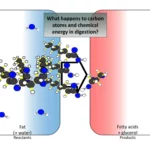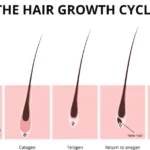Hey there, busy bee! We all strive for maximum productivity, but are we using the right strategies? Trying to juggle too many things at once can actually hinder your progress. Let’s debunk the multitasking myth and discover the power of focus.
Ditching Multitasking: The Focus Strategy
Let’s talk about multitasking. We’ve all been there, answering emails during meetings, or attempting to cook dinner while helping with homework. It’s the modern way, isn’t it? Perhaps not. The idea of multitasking as a productivity booster might be a myth. Research suggests that instead of making us more efficient, it can actually make us less so.
Think of your brain as a powerful computer. It can process immense amounts of information, but it’s most effective when focused on one complex task at a time. When we “multitask,” we’re rapidly switching our attention between different tasks. This constant switching takes a toll, making us slower, more prone to errors, and ultimately, less productive. Studies suggest this mental juggling can even temporarily lower our IQ! Resources like the Berkeley Well-Being Institute and even Wikipedia articles on human multitasking offer compelling evidence. For a fun, easy-to-understand explanation, check out videos like SciShow Psych’s episode on multitasking.
So, if multitasking is a myth, what’s the secret to getting things done? Focus. Concentrating on one task at a time, while seemingly counterintuitive, likely leads to quicker and more accurate completion.
Single-Tasking Your Way to Success
Here’s a simple approach to single-tasking:
- Set Clear Goals: Define your objectives. Writing them down helps maintain focus and motivation.
- Prioritize Tasks: Identify the most crucial and urgent tasks to tackle first.
- Break Down Large Tasks: Overwhelmed? Divide large tasks into smaller, manageable chunks. This makes the project less daunting and allows for celebrating small victories.
- Create a Distraction-Free Zone: Minimize distractions by turning off notifications and finding a quiet workspace.
- Timeboxing: Allocate specific time blocks for different tasks to stay on track.
- Take Regular Breaks: Short breaks throughout the day can refresh and refocus your mind, boosting productivity.
The Multitasking Nuances
Now, before completely dismissing multitasking, let’s consider some nuances. While true, simultaneous multitasking may be impossible, there are times when switching between tasks can be beneficial. Short bursts of intense activity involving task switching might actually spark creativity, acting like cross-training for your brain. In real-world scenarios, “multitasking” often means switching between tasks based on urgency—putting out fires, so to speak.
Another point is the “flow state”—that feeling of complete absorption in a task where time flies by. Flow state, the opposite of multitasking, involves deep, focused work, often producing the best results.
Finally, let’s acknowledge the constant digital distractions vying for our attention. These make focusing harder and exacerbate the negative effects of attempted multitasking. Mindfulness techniques and focus training can help combat these distractions.
So, the takeaway? True multitasking is likely a myth. Our brains function best when focused on one thing at a time. Embracing single-tasking, managing distractions, and cultivating flow state can unlock true productivity potential. Ongoing research may reveal more nuances, but for now, focusing on one task at a time seems a good bet. If you’re looking to test your knowledge about neural transmitters, you can try taking this crossword puzzle.
Multitasking: Hyphen or No Hyphen? The Definitive Answer
We’ve discussed multitasking, but how is it spelled? Is there a hyphen? It’s a surprisingly common question.
The short answer? No hyphen. “Multitasking” is correct. Think of it as one streamlined word, reflecting the efficiency you aim for when juggling tasks.
You might recall seeing “multi-tasking” with a hyphen. Language evolves. Modern English generally omits hyphens unless crucial for clarity. Major dictionaries like Oxford and Cambridge list “multitasking” as preferred.
“Multitasking” prevails over “multi-tasking” in the Google Ngram Viewer, which tracks word frequency in books. This real-world data confirms the hyphenless version dominates modern writing.
This aligns with grammatical trends. Prefixes like “multi-” usually attach directly to the root word. “Multitasking” follows suit.
The same principles apply to variations like “multitasker” and “multitasked.” No hyphens.
While we’re fairly certain about the current preferred spelling, language is ever-changing. For now, stick with “multitasking.” It’s clear, concise, and universally accepted. And if you need help understanding NEC 310.16, this article might help you.
| Term | Correct Spelling | Outdated Spelling |
|---|---|---|
| Multitasking | Multitasking | Multi-tasking |
| Multitasker | Multitasker | Multi-tasker |
| Multitasked | Multitasked | Multi-tasked |
Key Takeaways
- “Multitasking” (no hyphen) is the correct and preferred spelling.
- “Multi-tasking” is outdated and generally considered incorrect.
- Modern English avoids hyphens unless absolutely necessary.
- Google Ngram Viewer shows “multitasking” is significantly more common.
This isn’t just about spelling; it’s about clear, concise writing. So, next time you’re juggling tasks, remember to spell it “multitasking.”
The Myth of Multitasking: What It Really Means and Why It Matters
So, we picture a “multitasker” as someone effortlessly handling multiple tasks simultaneously, like a super-efficient machine. But true multitasking—giving 100% brainpower to multiple tasks at once—is basically a myth. Our brains don’t work that way.
What we actually do is rapidly switch between tasks. It’s like mental ping-pong. We bounce between writing an email, listening to a conversation, or checking social media while cooking. We feel like we’re doing everything at once, but our brains are just quickly shifting gears.
This constant task-switching isn’t harmless. It’s like interrupting your computer while running a program. It slows things down, causes errors, and reduces efficiency. When we switch tasks, our brains must reorient, leading to reduced focus, increased mistakes, and lower productivity. It’s like trying to run in two directions at once.
Research backs this up. Studies suggest multitasking impairs concentration, making it harder to filter distractions and stay on track. It can also increase stress and negatively impact memory and other cognitive functions. Some experts even believe constant task-switching rewires our brains, making focusing on a single task challenging.
So, if true multitasking is rare, what about those who seem to effortlessly handle multiple responsibilities? They’ve probably become adept at quickly switching between tasks, but they’re still switching. They may also prioritize and delegate effectively, creating the illusion of multitasking.
| Real Multitasking | Task-Switching |
|---|---|
| Doing multiple things simultaneously | Rapidly switching between tasks |
| Extremely rare in humans | Common but often mistaken for multitasking |
| Highly efficient (if possible) | Leads to reduced efficiency and errors |
| Not how most brains function | How most people handle multiple tasks |
The key takeaway? While juggling multiple responsibilities is often necessary, trying to do everything at once is usually counterproductive. Single-tasking—focusing on one task at a time—is generally much more effective. Minimizing distractions and giving full attention to the task at hand improves focus, reduces errors, and ultimately gets more done.
Current understanding favors task-switching as the predominant human experience, but research is ongoing. While the idea of a true “multitasker” is likely more myth than reality, how we manage our attention and switch between tasks is complex, and our understanding is likely to evolve.
Master Multitasking in a Sentence: Examples & Common Mistakes to Avoid
Let’s explore how we use “multitask” in everyday conversation. We’ve debunked the productivity-boosting myth, but the word is still useful. It describes something we attempt, even if it doesn’t work as imagined. So, how do we use it correctly?
We often describe juggling several activities, even if not truly simultaneous. For example, “I’m trying to multitask by answering emails while listening to this webinar,” or “I had to multitask this morning, getting the kids ready, packing lunches, and prepping for my presentation.” Here, “multitask” describes the intention to handle multiple things concurrently.
We also use “multitask” for job requirements or abilities. A job posting might say, “This role requires an individual who can multitask effectively.” Or, you might say, “Sarah is amazing; she can multitask like a pro.” These examples likely refer to quickly switching between tasks and maintaining order amidst chaos.
| Type of Sentence | Example |
|---|---|
| Describing an Attempt | “I tried to multitask during the meeting, but I kept missing important points.” |
| Describing a Job Requirement | “Candidates should be able to multitask and prioritize effectively.” |
| Describing Someone’s (Perceived) Ability | “He seems to multitask effortlessly, juggling multiple projects without breaking a sweat.” |
Remember, while we say “multitask,” the reality is often “serial tasking” or “task switching.” Some experts believe our brains are wired for one complex task at a time, and rapid switching decreases productivity and increases errors. Ongoing research might change our understanding. Current research suggests short bursts of task switching might spark creativity, but sustained productivity generally favors focusing on one task.
So, when you say, “I need to multitask,” consider what you’re really doing. Are you genuinely doing several things at once, or rapidly switching? Recognizing the difference can improve time and energy management. Perhaps instead of saying, “I need to multitask by cooking dinner and helping my kids with homework,” you could say, “I’ll focus on cooking dinner first, then dedicate my full attention to helping my kids.” This subtle shift reflects a more realistic and potentially more productive approach. It acknowledges our brains’ limitations and suggests a more mindful approach. It’s about finding a balance and using language that accurately reflects your actions.
- Crypto Quotes’ Red Flags: Avoid Costly Mistakes - June 30, 2025
- Unlock Inspirational Crypto Quotes: Future Predictions - June 30, 2025
- Famous Bitcoin Quotes: A Deep Dive into Crypto’s History - June 30, 2025

















2 thoughts on “The Multitasking Myth: How to Boost Your Productivity by Focusing on One Thing at a Time”
Comments are closed.